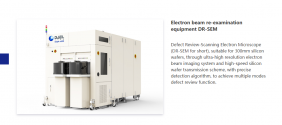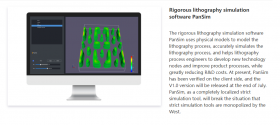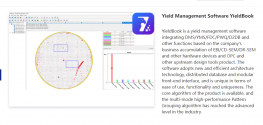Why do you need the link so bad? If you don't believe just say so and let it go. Otherwise your attacking the poster just for the sake of attacking him.Because it was a June 15 2020 article,is it not?You still haven't provide the link of the article
You are using an out of date browser. It may not display this or other websites correctly.
You should upgrade or use an alternative browser.
You should upgrade or use an alternative browser.
Chinese semiconductor industry
- Thread starter Hendrik_2000
- Start date
- Status
- Not open for further replies.
I think the biggest issue is people are asking why China couldn't compete with the whole world not just the US. If without sanctions, China could probably churn out 7nm and 5nm already which the US couldn't do at the moment. China is 20-30% self sufficient on semiconductor equipment which is pretty high if compare with other countries.
MSM and many so called experts asked why China couldn't achieve what it did in other sectors and replicate in semiconductor. The simple answer is the game is stacked against China when it is China against the world as the US is forcing other countries to comply with banning exports of many high end semiconductor equipment.
MSM and many so called experts asked why China couldn't achieve what it did in other sectors and replicate in semiconductor. The simple answer is the game is stacked against China when it is China against the world as the US is forcing other countries to comply with banning exports of many high end semiconductor equipment.
China's successes in solar, winds, and EVs are due to the fact that these are new techs. Chinese government entered these areas very early and made a ton of investment and gave out a ton of incentives. After the survival of the fittest game that resulted in a few national champions, China became an undisputed leaders in these new industries.
Not really. Flat panel,ship building,lithium battery,high speed rail etc, none of these are "new techs",they were very mature by the time China entered the game,but China managed to claim a large share of the market anyway. Even wind isn't new tech,Vestas/Siemens/GE dominated the market before China enter the game.
Not really. Flat panel,ship building,lithium battery,high speed rail etc, none of these are "new techs",they were very mature by the time China entered the game,but China managed to claim a large share of the market anyway. Even wind isn't new tech,Vestas/Siemens/GE dominated the market before China enter the game.
In all of these sectors flat panel, ship building, lithium battery, high speed railway etc, they are not mature technology at all, as they are still evolving technology. China has managed to innovate in these areas, while others have stayed stagnant. For example, the US is stagnant in all these sectors..
In all of these sectors flat panel, ship building, lithium battery, high speed railway etc, they are not mature technology at all, as they are still evolving technology.
Semiconductor is also evolving,then why would you say semiconductor is mature technology?
Ship building has been around for hundreds of years already,much longer than semiconductor,how is it ship building less mature than semiconductor?Remember the british has been building modern ships hundreds of years before Korea/China enter the game
There is even less "evolution" in LCD industry than semiconductors,compare to 30 years ago,apart from the panel got larger.
There is no major breakthrough in lithium battery chemicals today than semiconductors,compare to 30 years ago
Last edited:
Semiconductor is also evolving,then why would you say semiconductor is mature technology?Ship building has been around for hundreds of years already,much longer than semiconductor,how is it ship building less mature than semiconductor?Remember the british has been building modern ships hundreds of years before Korea/China enter the game
All of the above are evolving technologies. I did not say semiconductor is mature. The Chinese and the Vikings have been building ships way before the British entered the game.
All of the above are evolving technologies. I did not say semiconductor is mature. The Chinese and the Vikings have been building ships way before the British entered the game.
I don't get what exactly are you trying to claim here?
I was replying to KYli’s post,where he claims that China having hard time in semiconductor industry,is because semiconductor is an old and mature industry,so later comers like China will naturally experiencing difficulties,and the areas where China succeeded are all emerging new industries. I counter his claim by providing examples where China succeed in industries just as old and mature as semiconductor if not more.
I'm sorry, what is mature semiconductor technology? it's just the production line... China has completed most of the mature 28nm semiconductor technology... the most difficult thing for China is that there are so many companies that don't understand about R&D... they still do foot in place... but luckily that's not a big problem for China... 90-28nm semiconductor technology is still useful in most of the chip industryI don't get what exactly are you trying to claim here?
I was replying to KYli’s post,where he claims that China having hard time in semiconductor industry,is because semiconductor is an old and mature industry,so later comers like China will naturally experiencing difficulties,and the areas where China succeeded are all emerging new industries. I counter his claim by providing examples where China succeed in industries just as old and mature as semiconductor if not more.
Dongfang Jingyuan Electron Limited has added three new products to their list.
- Defect Review SEM
SEpA-r600 is the first generation DR-SEM product of Dongfang Jingyuan. At present, the engineering machine (Alpha machine) has passed the first round of wafer demo, and the image quality has reached the level of the 6th generation of international mainstream equipment, realizing "clear sight"; the high-precision workpiece table is perfectly matched with the self-developed coordinate transformation algorithm, which can combine high-end The defect position reported by the optical inspection equipment is calibrated within the error range of ±1μm, reaching the international advanced level in the "accurate" index; the Search Mode and Direct Mode processes have been opened up, and "automation" has been realized in defect re-inspection. The product development team has both electron beam inspection/re-inspection experience and high-end optical inspection equipment application experience. The compound knowledge system enables the team to have a deeper understanding of DR-SEM, and the products developed will be closer to customer needs. At present, the SEpA-r600 product can meet the requirements of >=28nm process, and the Beta machine integration work is accelerating, and the customer order has been received, and it is just around the corner to enter the production line for verification.

- Lithography Simulation Software

- Yield Management Software.

- Defect Review SEM
SEpA-r600 is the first generation DR-SEM product of Dongfang Jingyuan. At present, the engineering machine (Alpha machine) has passed the first round of wafer demo, and the image quality has reached the level of the 6th generation of international mainstream equipment, realizing "clear sight"; the high-precision workpiece table is perfectly matched with the self-developed coordinate transformation algorithm, which can combine high-end The defect position reported by the optical inspection equipment is calibrated within the error range of ±1μm, reaching the international advanced level in the "accurate" index; the Search Mode and Direct Mode processes have been opened up, and "automation" has been realized in defect re-inspection. The product development team has both electron beam inspection/re-inspection experience and high-end optical inspection equipment application experience. The compound knowledge system enables the team to have a deeper understanding of DR-SEM, and the products developed will be closer to customer needs. At present, the SEpA-r600 product can meet the requirements of >=28nm process, and the Beta machine integration work is accelerating, and the customer order has been received, and it is just around the corner to enter the production line for verification.

- Lithography Simulation Software

- Yield Management Software.

EDA for Hybrid optical silicon chips.
Optical computing empowers Xinhuazhang Research Institute and Xizhi Technology to jointly create a black technology for chip verification
Recently, Xinhuazhang Technology, a provider of system-level verification EDA solutions, announced that it has teamed up with Xizhi Technology, a global leader in optoelectronic hybrid computing, to lay out the future-oriented strategic technology research and development of "EDA+optical chips". Based on the heterogeneous acceleration capability of optical chips, the two parties will carry out joint research on the acceleration of heterogeneous computing in the EDA field, and formally introduce the EDA tools of Xinhua Zhangzhi V verification platform in the optical chip design process to form a vertical solution to improve optical chip design. The efficiency of chip design and verification meets the growing data processing and computing needs in data communication, AI and optical computing and other application fields.The vigorous development of emerging fields such as AI, 5G, Industrial Internet of Things, and self-driving cars has driven the explosive growth of global data, and the demand for computing power has also increased sharply. The way of speeding up the performance of traditional electronic chips and transmitting data has gradually been unable to meet the growing requirements for data processing and energy saving. With the characteristics of high throughput, low delay, and low power consumption, photonic chips can effectively improve the speed and bandwidth of electronic integrated devices. Therefore, photonic hybrid computing has become one of the effective ways to break through the bottleneck of existing IC design.
Hu Yongqiang, Vice President of Global Electronics of Xizhi Technology:
"With the help of Xinhuazhang's FPGA prototype verification system HuaPro, we have further improved the design and verification efficiency of optical chips, and its excellent software and hardware co-verification capabilities have left a deep impression on us. As a staunch supporter of integrated silicon photonics technology, We believe that the close cooperation with Xinhuazhang will not only promote the optimization of EDA processes such as the design, simulation, and verification of optoelectronic hybrid Chiplet chips, but also significantly promote the efficient research and development of photonic systems, and will also greatly improve the complex data processing and high-level capabilities of system-level IC verification tools. Computing power helps the development of next-generation intelligent EDA tools."
- Status
- Not open for further replies.
